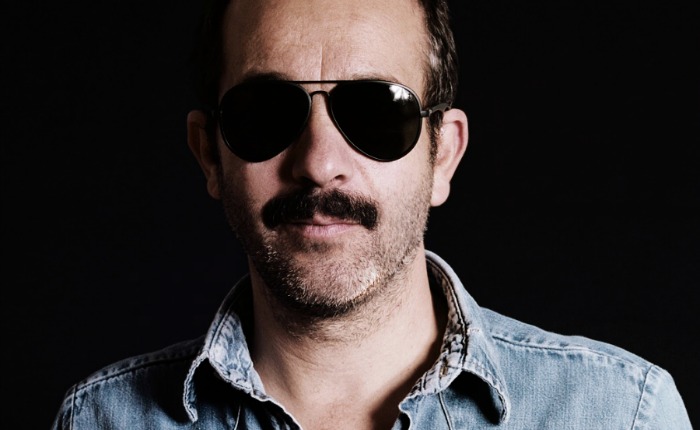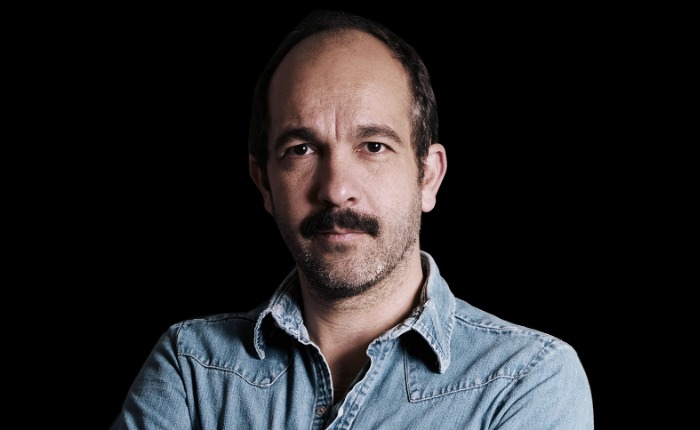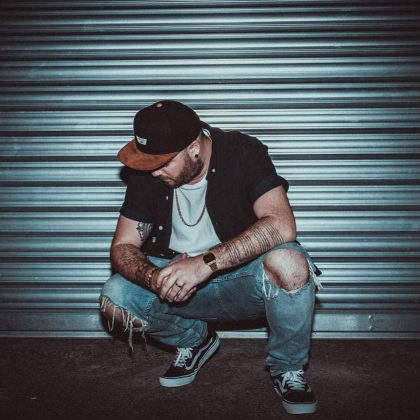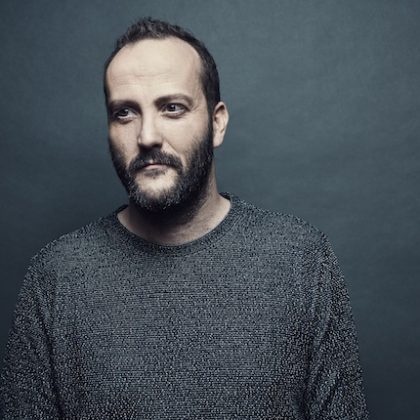A History of French House With Etienne de Crécy
Ask many of today’s American EDM stars what piqued their interest in electronic music, and they’ll probably cite Daft Punk’s Discovery. But although the robotic duo is the most visible act to have emerged from the ‘90s French house scene, they weren’t the first or only ones to have left an indelible mark.

As one-half of Motorbass, Etienne de Crécy (alongside Philippe Zdar, who later helped found Cassius) released the classic deep house LP Pansoul in 1996, a year before Daft Punk’s debut Homework fully focused attention on Paris. De Crécy’s equally seminal solo debut Super Discount also featured school friends on the rise, Air and producer Alex Gopher.
With 2004’s Super Discount 2, de Crécy helped push a new electro sound—via collaborations with the likes of DJ Mehdi—providing a blueprint that has been built upon by scenes such as complextro. His spectacular live light show, which took place inside a giant cube structure, was another pioneering step toward EDM’s now-ubiquitous stage theatrics.
In honor of today’s release of Super Discount 3, we asked de Crécy to recap his career and provide an insider’s view of the French influence. Here’s his story, in his own words:
I was [originally] a bass player in a punk rock band, but I was really bad. I knew I wanted to work in music, but I was aware I wouldn’t be able to make any money with my bassist skills. Then I decided to learn sound engineering.
I met Philippe Zdar at the studio +XXX. He was sound engineer, and I was assistant. We became friends and ended up at a rave on a boat in the winter of ’92. When we got off the boat at 11am the day after, we had the same revelation: That is the music from the future! We bought a sampler and started to make techno. We used to work with hip-hop bands at the studio—that’s why we used their way of making music: the sampler. Techno, back in ’92, was mostly made with synthesizers and rhythm boxes. We sounded different because we were doing music with samples from soul and jazz and funk records.
There was no French scene at this time, only two shops which sold house and techno records, but there were many people totally mad with this music. When we did Pansoul, we had no idea that techno could ever become mainstream. Daft Punk realized what we thought impossible, keeping the credibility of this sound but making it understandable for a larger audience. I met Thomas [Bangalter] and Guy-Manuel [de Homem-Christo]; basically, we all knew each other in the French scene, as Paris is quite a small city. When we started, we were a very small community of electronic music lovers: We went [to] the same parties, we used to buy our vinyl at the same record shops, etc. We stay in contact with each other like in a really big family with many, many cousins.
The creative process of the first Super Discount was super chaotic. My first idea was to make a very beautiful record, like with very heavy vinyl, a gold sleeve, etc., but under the cheap name Super Discount. Pierre-Michel Levallois, Solid’s label manager, told me the idea of the name was cool, but that making a really expensive record was not that smart. That’s why I decided to make a 10-inch [vinyl]—because the format was unusual but not expensive. But you can’t put many tracks on a 10-inch; that’s why I decided to make four. The idea to use them as a puzzle with the Super Discount logo came by itself, and then we thought we should release them one after another, with 15 days between each release.
After we set up the format of the release, I imagined the music should be very cutting-edge house music, only for people who know; but four 10-inches meant eight tracks. I was not ready, and I postponed the production. One day, Pierre-Michel told me the mastering of the first 10-inch was the day after, and I just had demos and rough mixes! I made the first one during the night and all the other tracks within two weeks. I was too much in a rush to even think about it being cutting-edge; I did what I was able to do at such short notice. So the music was more accessible and fun, and I had to ask my friends Alex Gopher and Air to help me by sending some files of unfinished tracks, and I produced them for Super Discount. I thought it would be easier to credit tracks from Alex Gopher and Air if I [also] added many names of imaginary producers. So I invented a lot of aliases! That was totally stupid: People thought Super Discount was a compilation, and I’ve been spending my career explaining that it was me that produced this album.

After I released Tempovision in 2001, I meant to make the Mooloodjee album. Mooloodjee is an alias I used to release some house tracks on my sub label, Poumtchak. But when I started to work on it, I was bored with all the house records released at this time. All the tracks sounded the same, with filtered samples, cheesy women’s voices and cheap melodies. I didn’t want to be part of this movement anymore. While house music felt down, that time was also [witness to] the rising of a new school of techno, referring to the early sound from Detroit, but dirtier and distorted. “Rocker” by Alter Ego sounded like salvation! It was in this state of mind I started to work on Super Discount 2, with the intention that the album couldn’t be played in a lounge bar.
I was touring with Alex Gopher and Julien Delfaud with Super Discount 2 from 2004 to 2006. At the end of the tour, I was frustrated by the visual show we provided. We were just three guys behind a table, pushing faders and buttons. While I started asking questions about what to bring onstage to be as spectacular as an average rock band, Daft Punk came out with all the answers: the Pyramid! I met 1024, who are architects and VJs at the same time. They invented the [HyperCube], and we worked together on the art direction to make it fit to my music. The production was pretty smart, as the Cube is made of scaffold with screens on it. We’d rent scaffold at every place we played, and travel only with my gear and the screens. That fit in six suitcases, and we were six people on the road, including me.
I played with the Cube at Coachella in 2009, and I spent some time playing in the US after that. That was really amazing, because people were discovering electronic music with the new school of electro: Ed Banger, Justice, Sebastian, Bloody Beetroots, Dada Life, etc. That was crazy! I was on this wave at the beginning, but the wave became a tsunami, and I’m not able to surf a tsunami.
I think EDM is a good thing because it opens minds to electronic music. It enlarges the audience for all electronic productions, because EDM uses the same codes as techno or house. But even if I found some good tracks at the beginning, I think EDM now sounds like a caricature of itself. I can’t find the diamond in the dirt anymore.
Like house music 10 years ago, all the “bangers” sounded the same. But there was a new school of house music, very funky and groovy. I decided to follow this influence, which in turn was influenced by the sound I used to produce 15 years ago. I didn’t feel the music I played in the Cube could have any sense on a record; the music was meant for big stages and thousands of people. But the new tracks I’ve produced are perfect to listen to in a club, and also at home… that’s when I knew it was time for Super Discount 3!
The new show is based on a giant “SUPER DISCOUNT” sign! We have the “SUPER” behind us, and we use the “DISCOUNT” to put our gear on. We use only analog synths and a rhythm box—no laptop, no CD players. Alex is working on a TR-808 and Tetra synth; Julien has the MPC1000 and a TR-909. I have a TB-303 and a filter and the mixing desk to make cuts and FX. We have a lot of fun, and when we’re all synced, we can provide a powerful and funky house music show!
Follow Etienne De Crécy on Facebook | Twitter. Get Super Discount 3 here.



